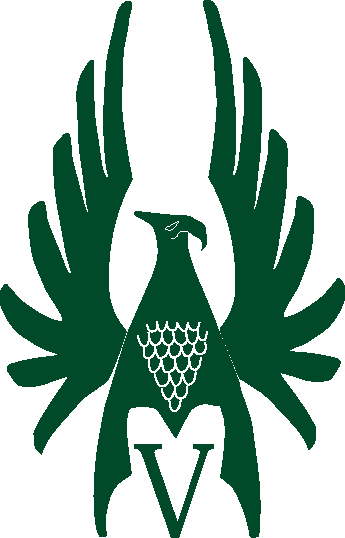
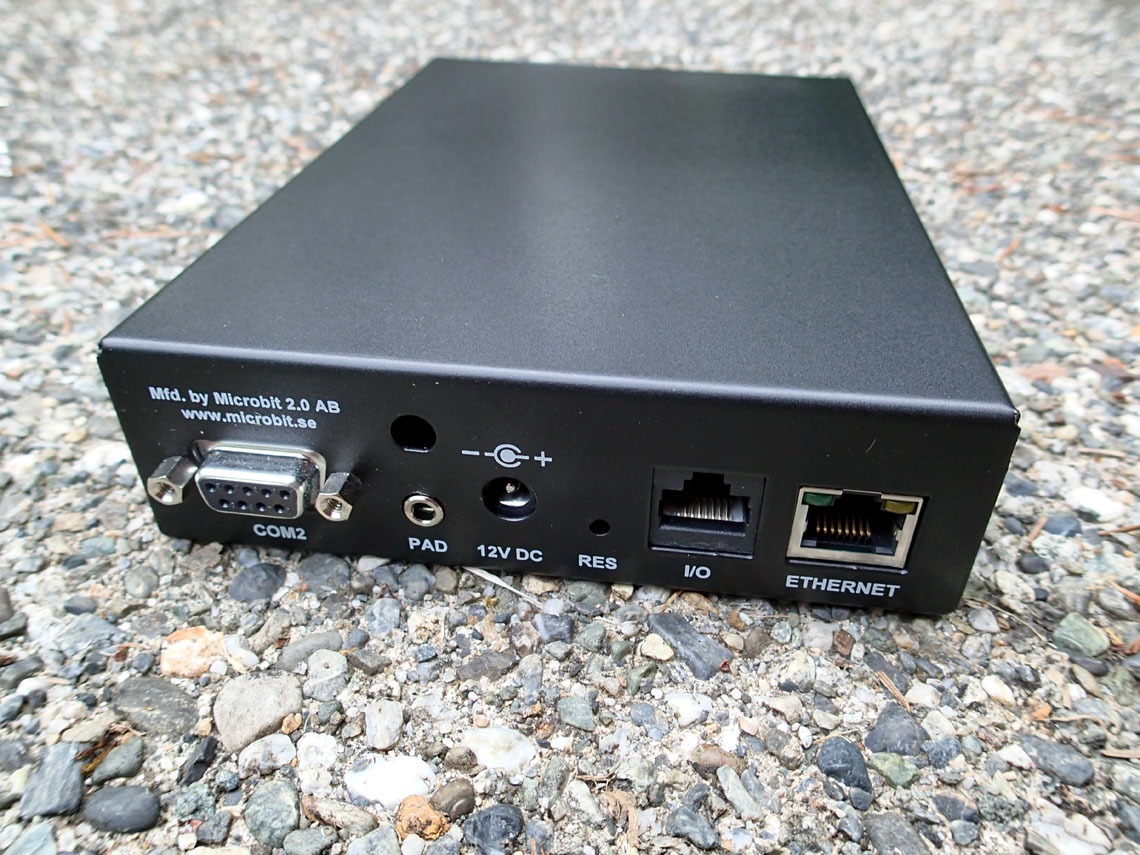
This one for the Radio End
Each interface box will run two serial COM ports and the radio control
panel. Two units made by Microbit in Sweden
Microbit website
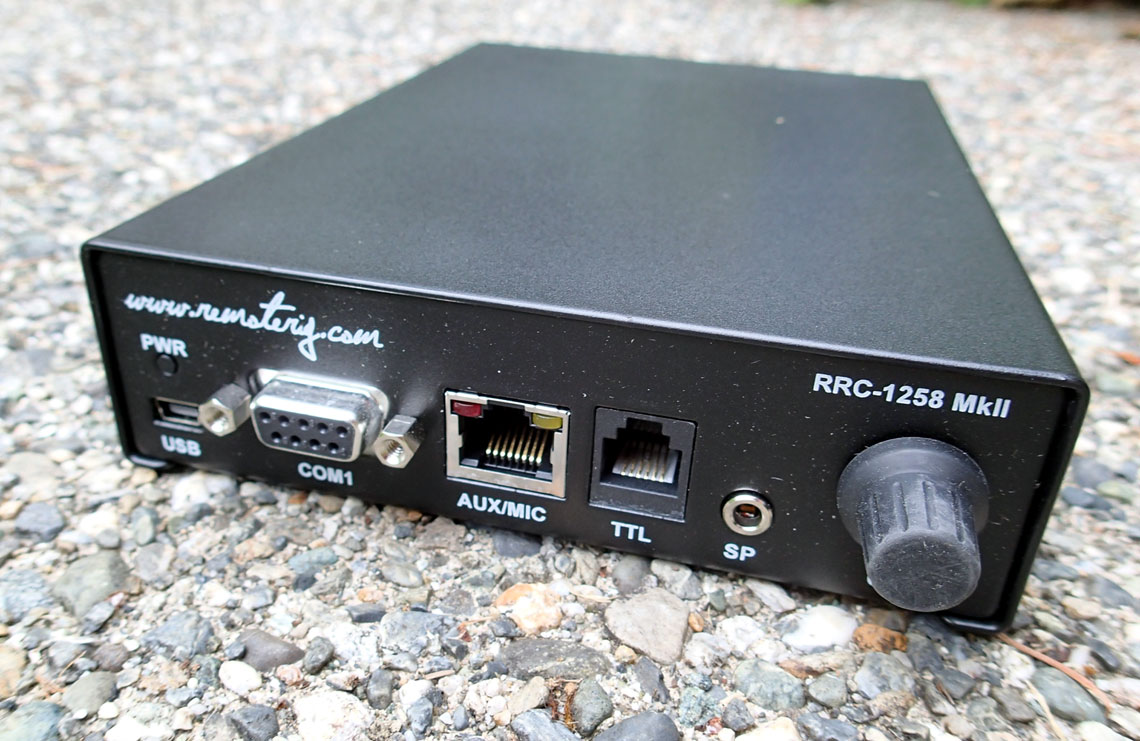
Control End Unit
Control panel and the mike/key/speaker plug into this unit. Knob is the
internal keyer speed. We later added the WiFi board. Note all the I/O.
These things can run a lot of external stuff.
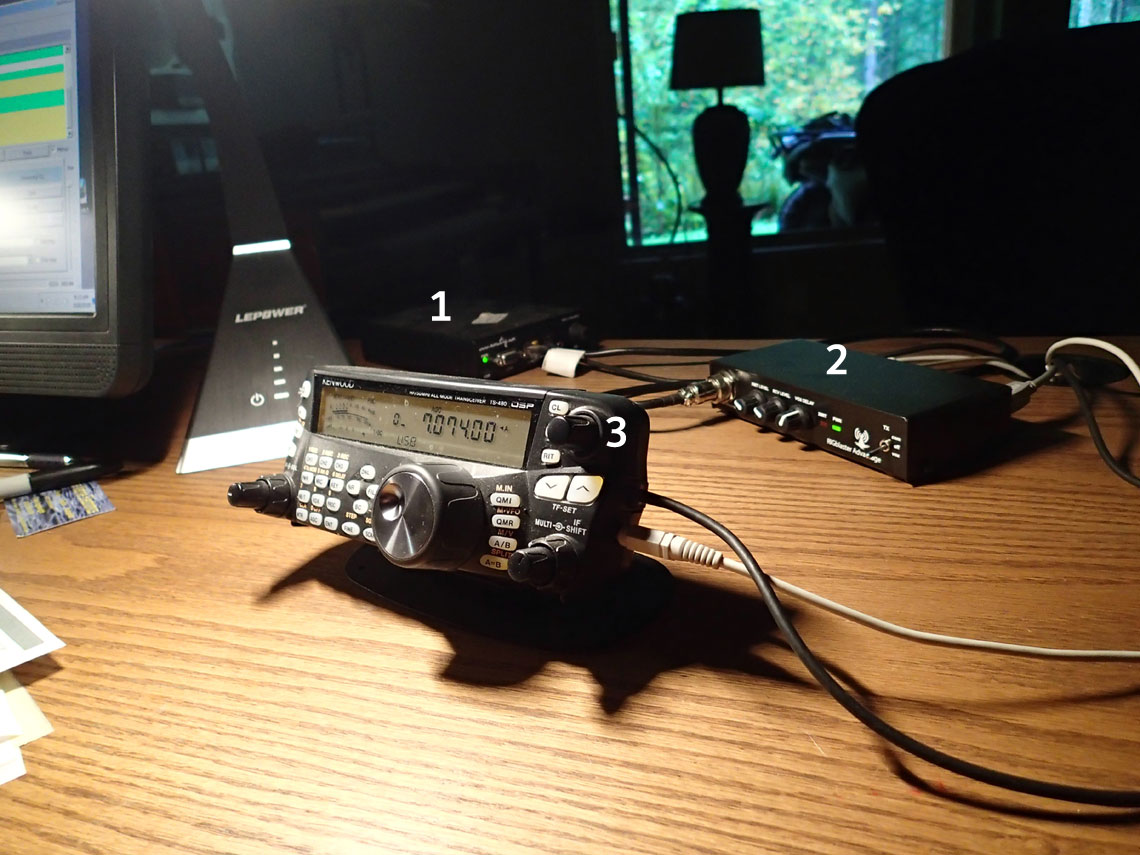
The basic WB7ELY remote station in the office.
We decided we didn't need a bunch of big transmitters and receivers on
the desk anymore.
Its 100 ft from the equipment and antennas in the garage.
This, and a network connection are all you need for a full performance
station. View
(L-R) 1- Remote rig control unit, 2- Sound card, 3-Radio control
panel.
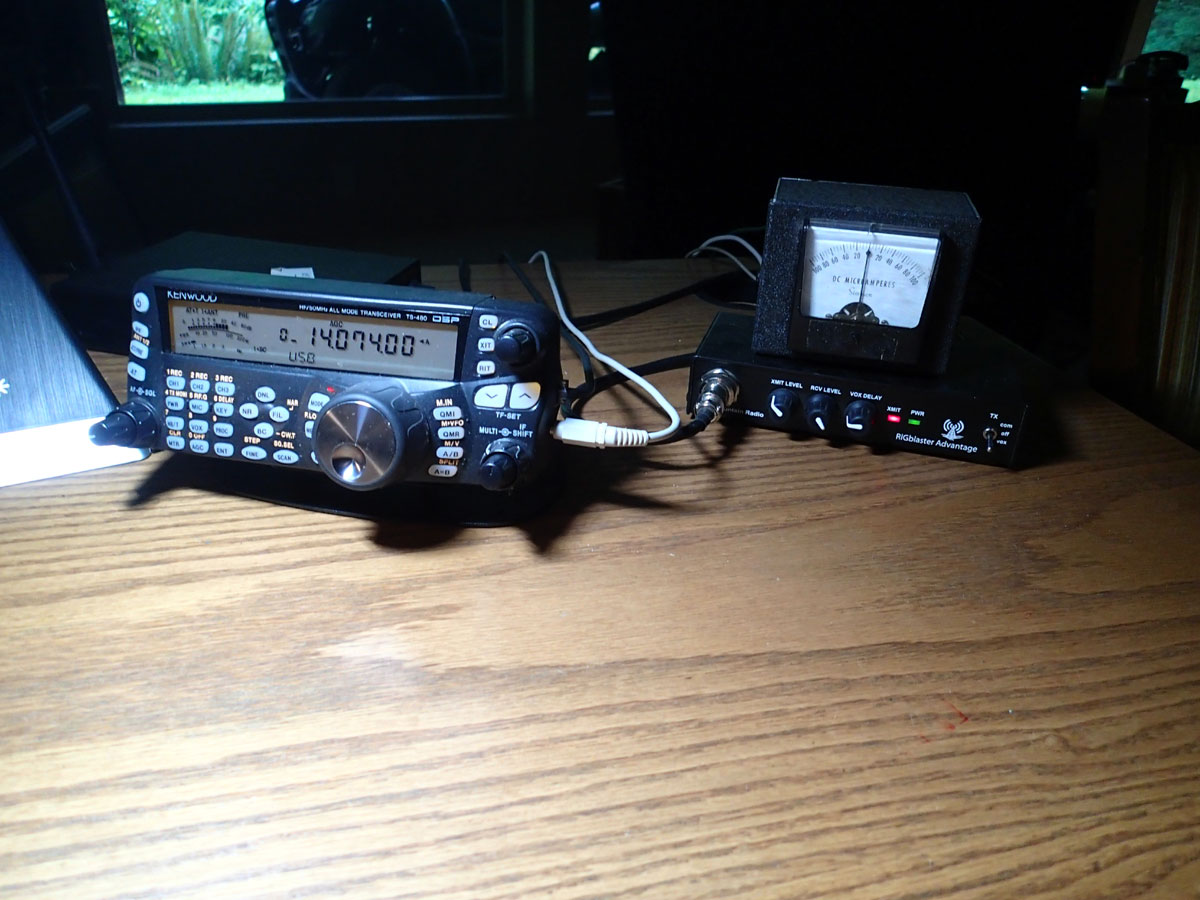
We started really enjoying the easy operation.
For the first time ever, we "froze" the WB7ELY configuration!
Station operators soon felt the need for some "local" field strength
indication. You can look at the power output meter on the control panel
but you really want a second independent indicator.
Note the 50uA analog meter "first try". field strength meter.
Here's a better one we found on EBay
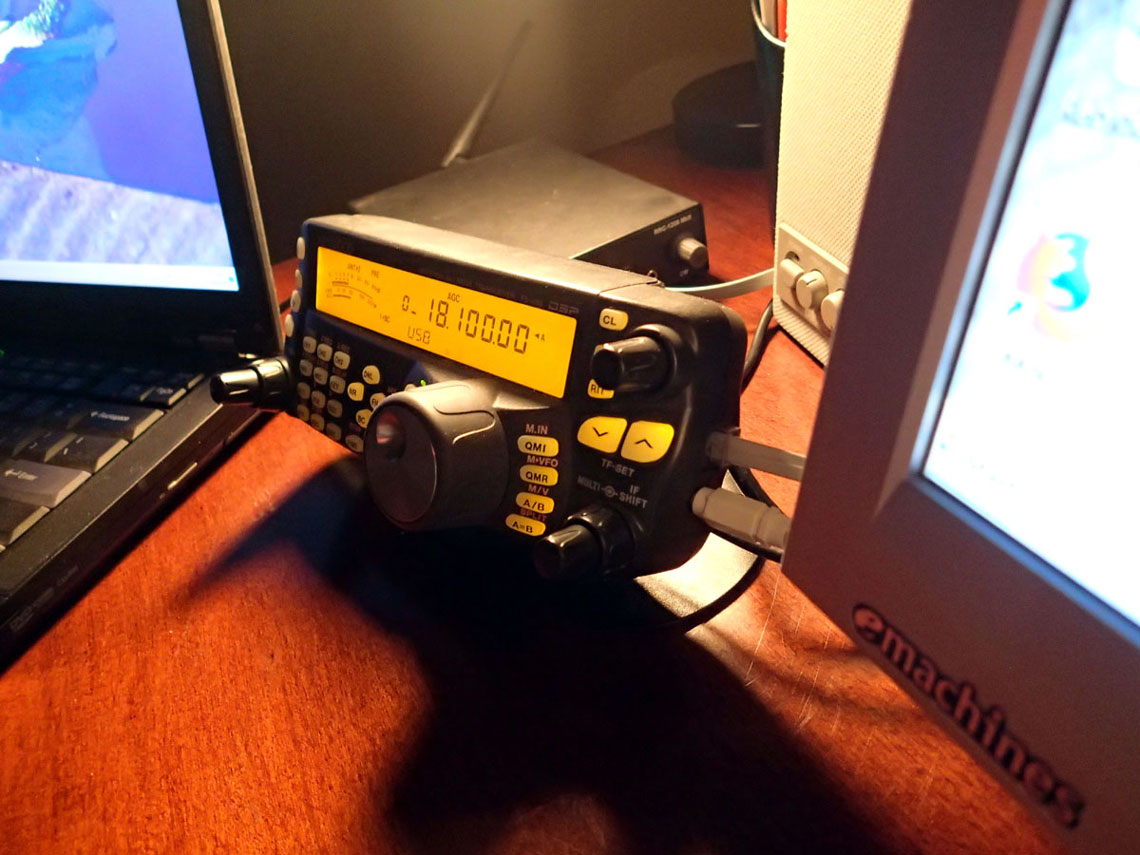
Arizona Winter QTH station
The remote station is accessed over the internet 1100 miles away
No HOA worries, low noise, no latency.
Amplifier control is on the
laptop on the left. We add an Elecraft
KPA500 amplifier to the station.
...more winter QTH.
Check my story
about the journey to remote operation
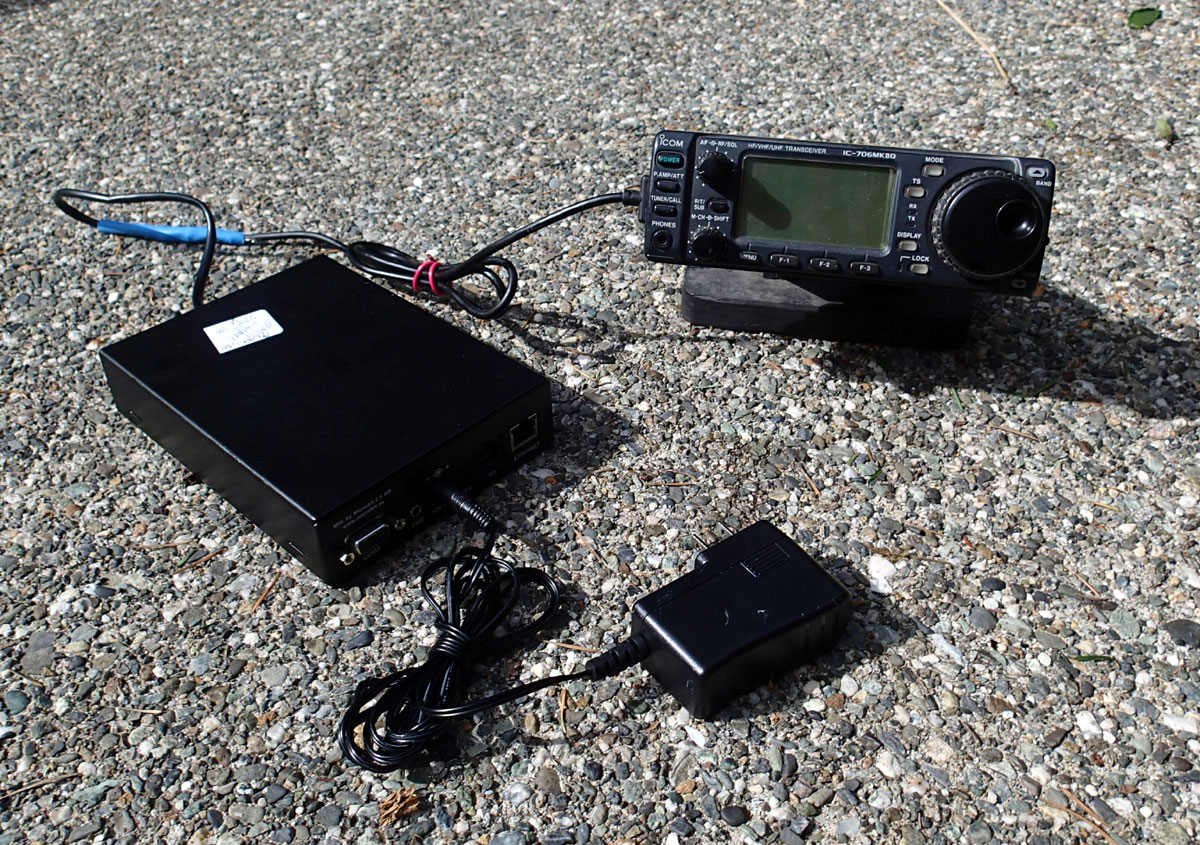
Rewind to the beginning in 2017
We started out using one of our IC-706 radios just to
evaluate whether this thing even worked. Note the control panel plugged
into the control unit and the power wall wart. Shot of 706
running Arizona remote
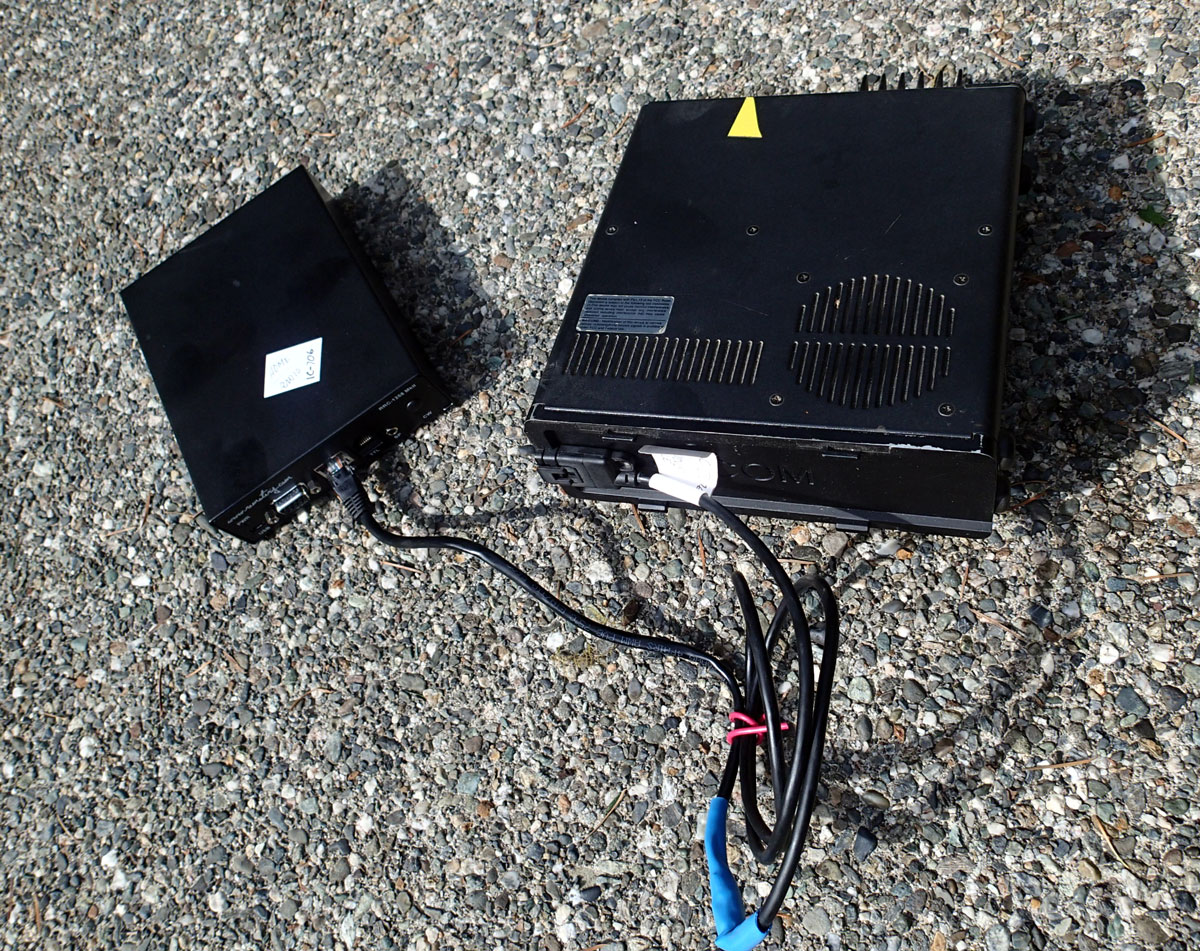
Here's the IC-706 Transmitter end. You have to
modify the separation cable for an RJ45 and that has to be done carefully but not that
difficult.
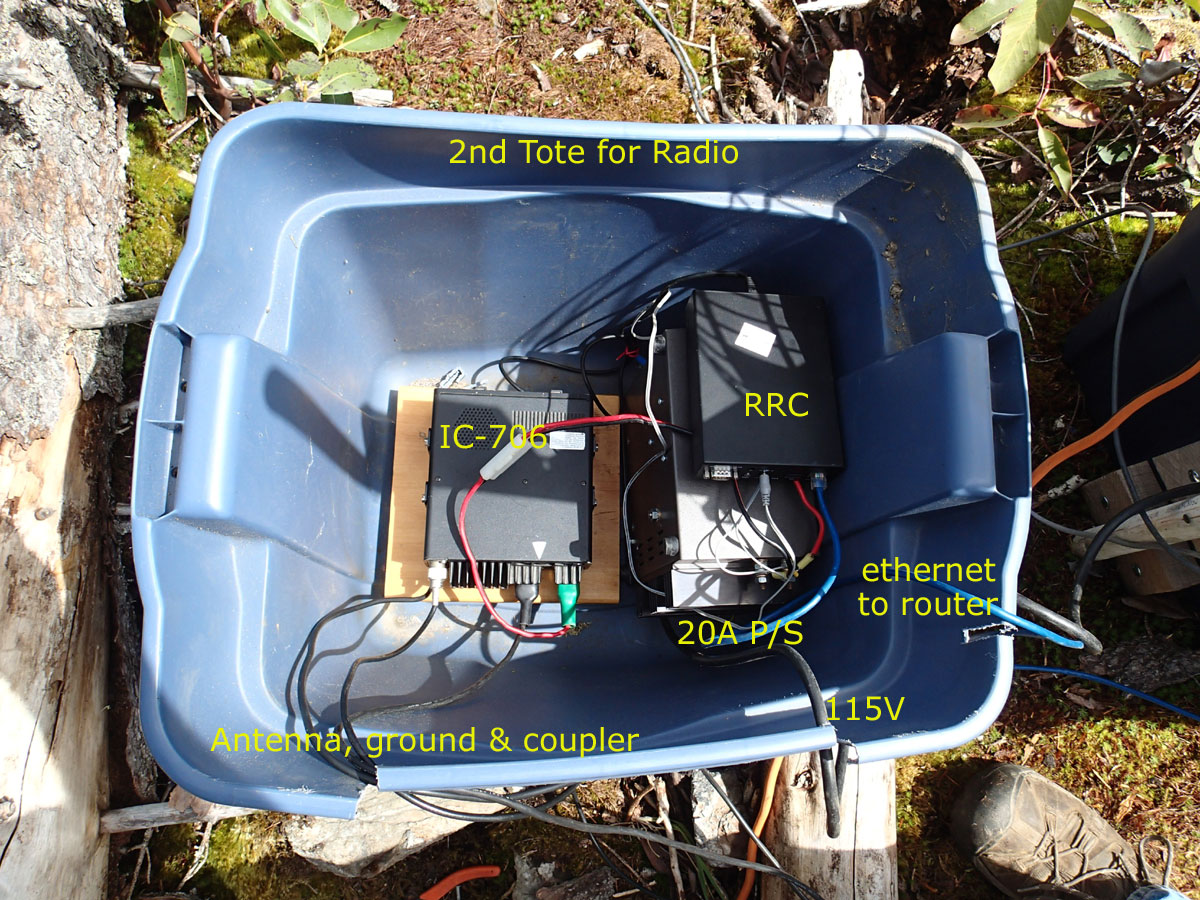
It worked so well that we tried putting it on top of
the hill behind us!
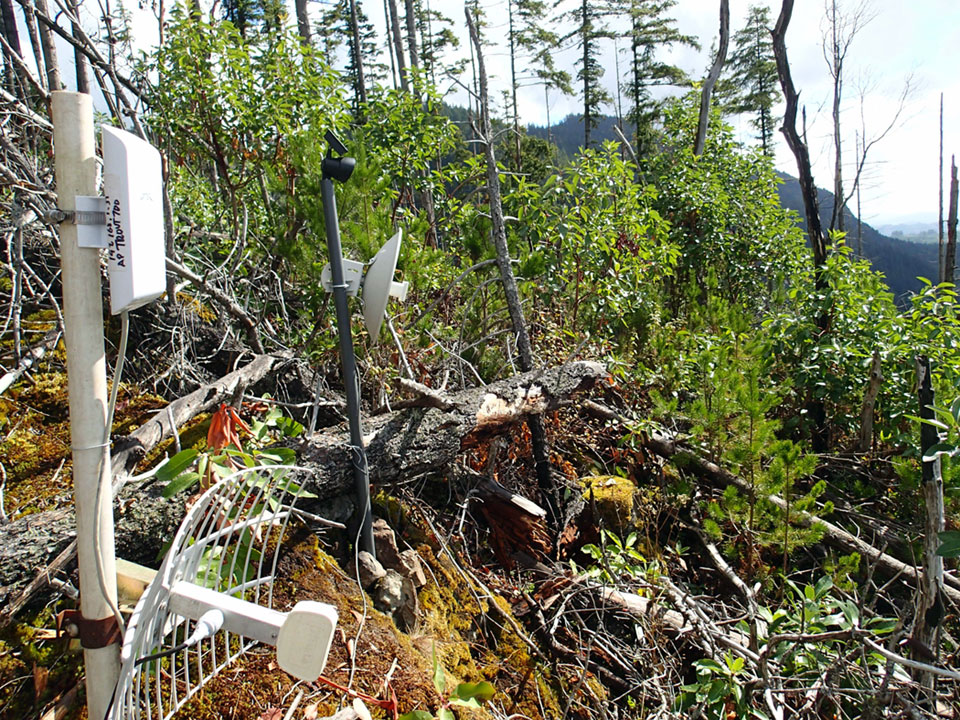
We had a line of sight to this 900 ft spot. Here's
the top-end of the 1/2 mile point to point link.
...more
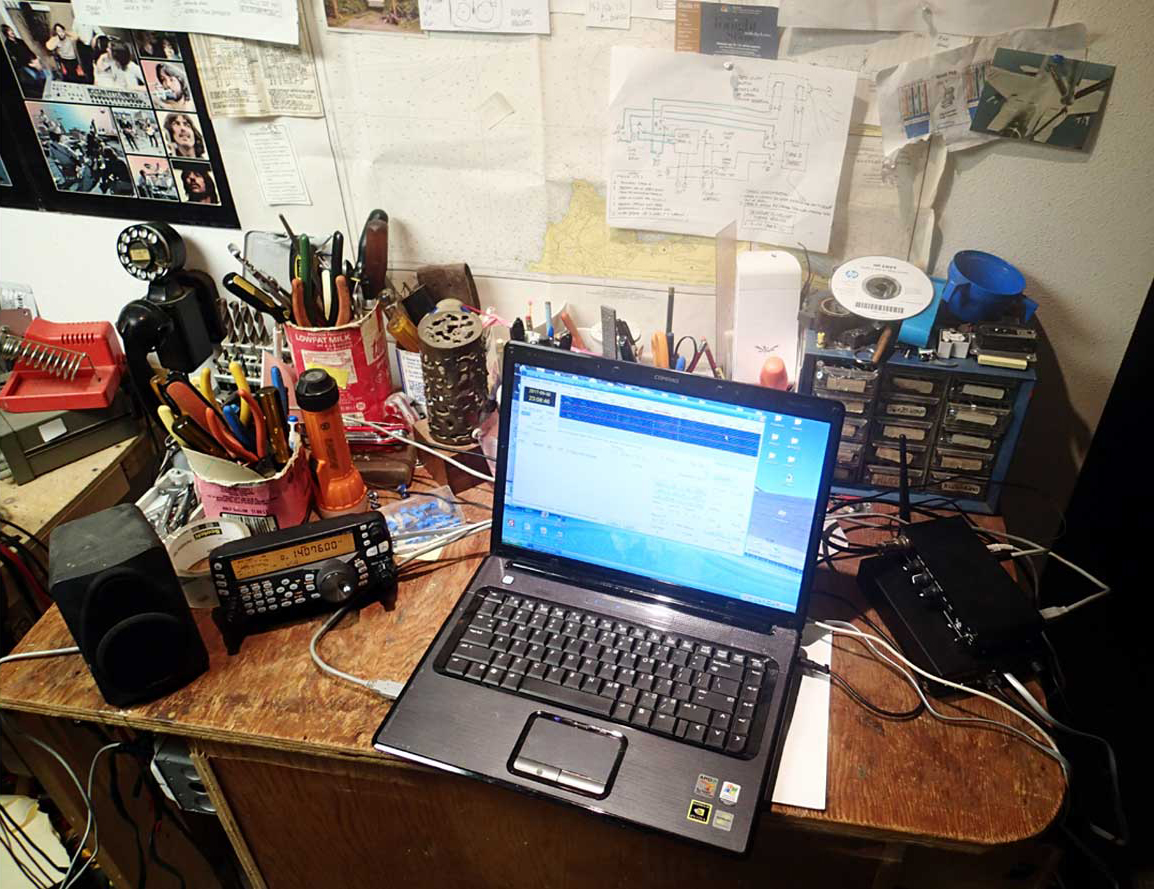
Decided to sell one of the IC-706 radios and purchase
a Kenwood TS480. The Kenwood was newer, had better performance and a
good looking fully functional control panel. Besides, it was time for a
new radio!
Here's the initial WiFi hookup and checkout on the bench.
(L-R) speaker, Kenwood control panel, laptop, RRC interface and sound card.
Note the 1940's Western Electric space saver wall phone and Beatles
"Rubber Soul" Album cover in background.
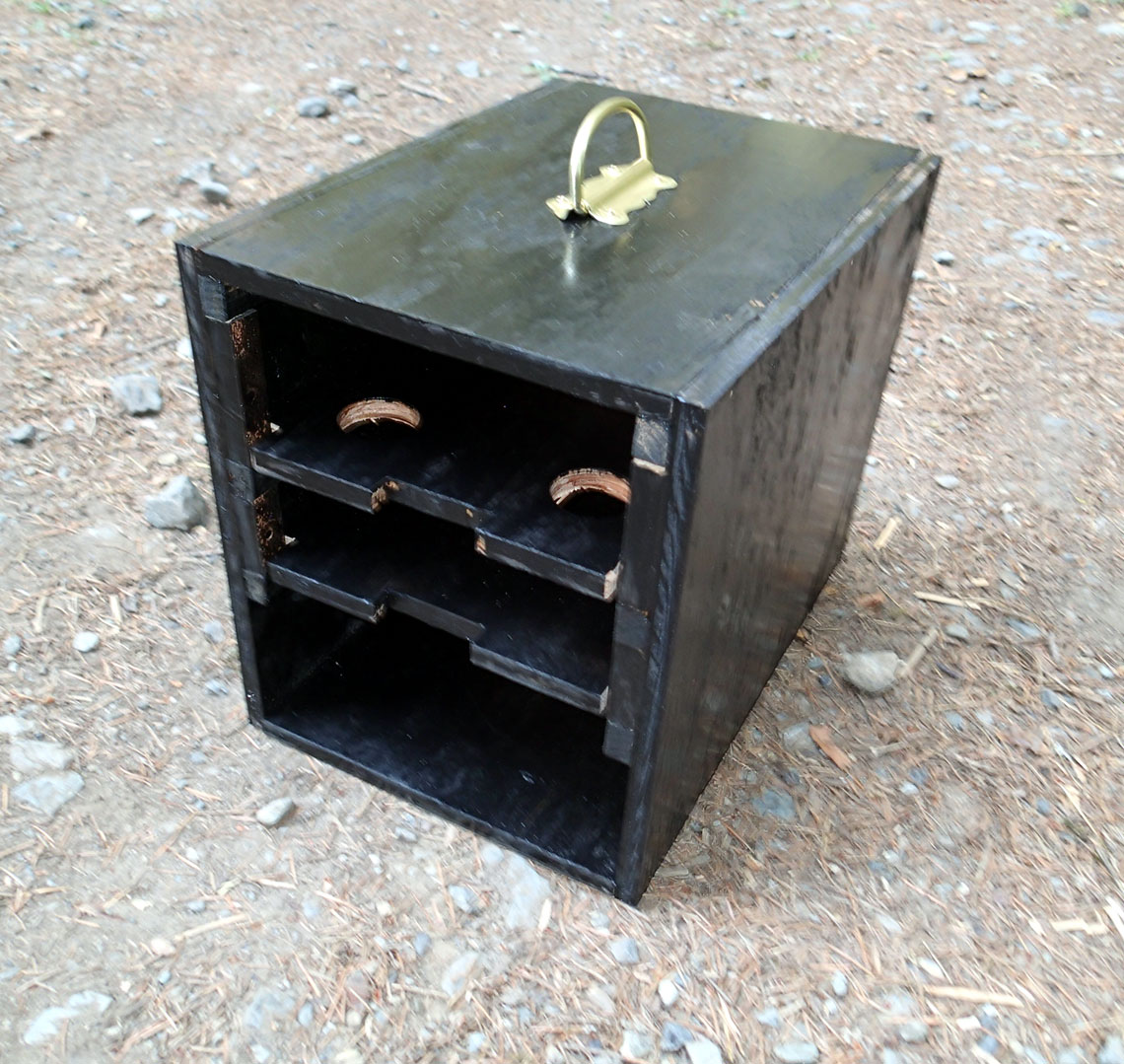
We decide to build a custom-made wood box to hold
everything.
We'd put all of the radio-end components in there and have everything
together for short lead-lengths. Pull through cooling from a fan would
keep everything cool.
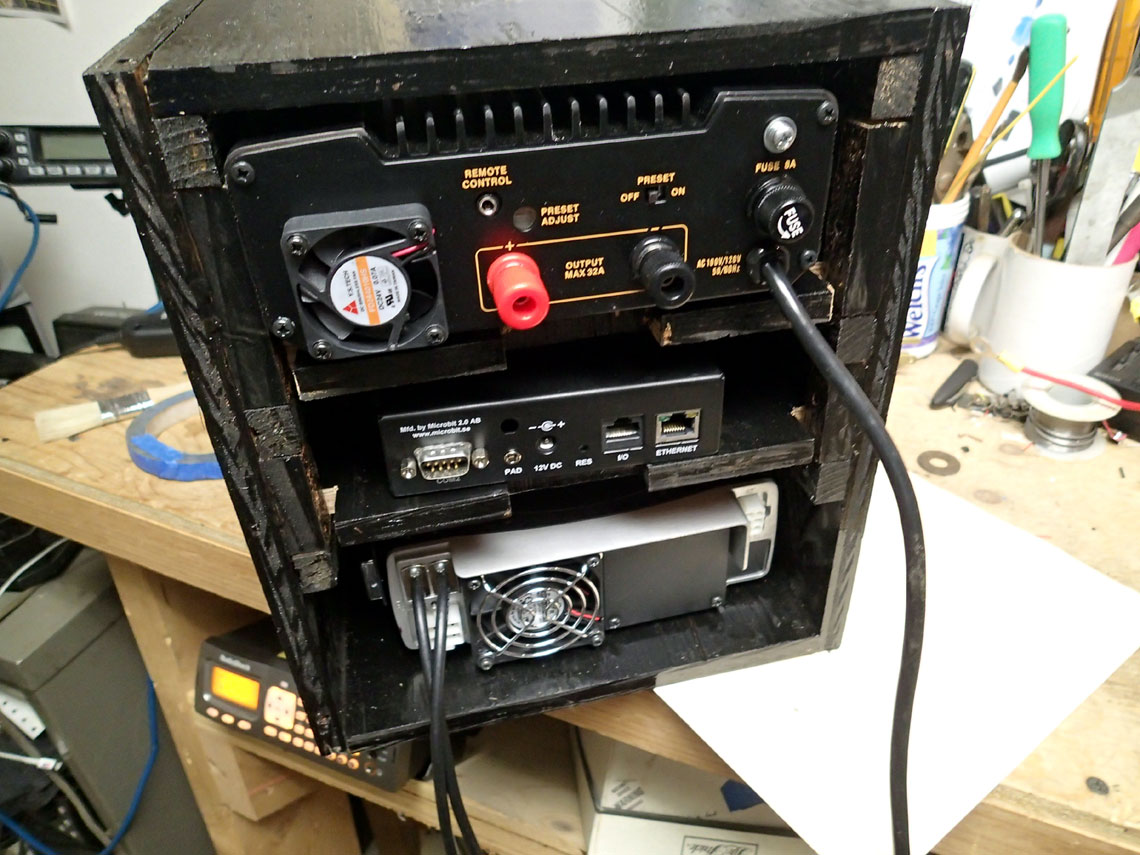
Mounting the power supply, controller and radio
It was too tight, the box needed to be bigger and have more room.
View the tight wiring that was obvious we
designed the box too small
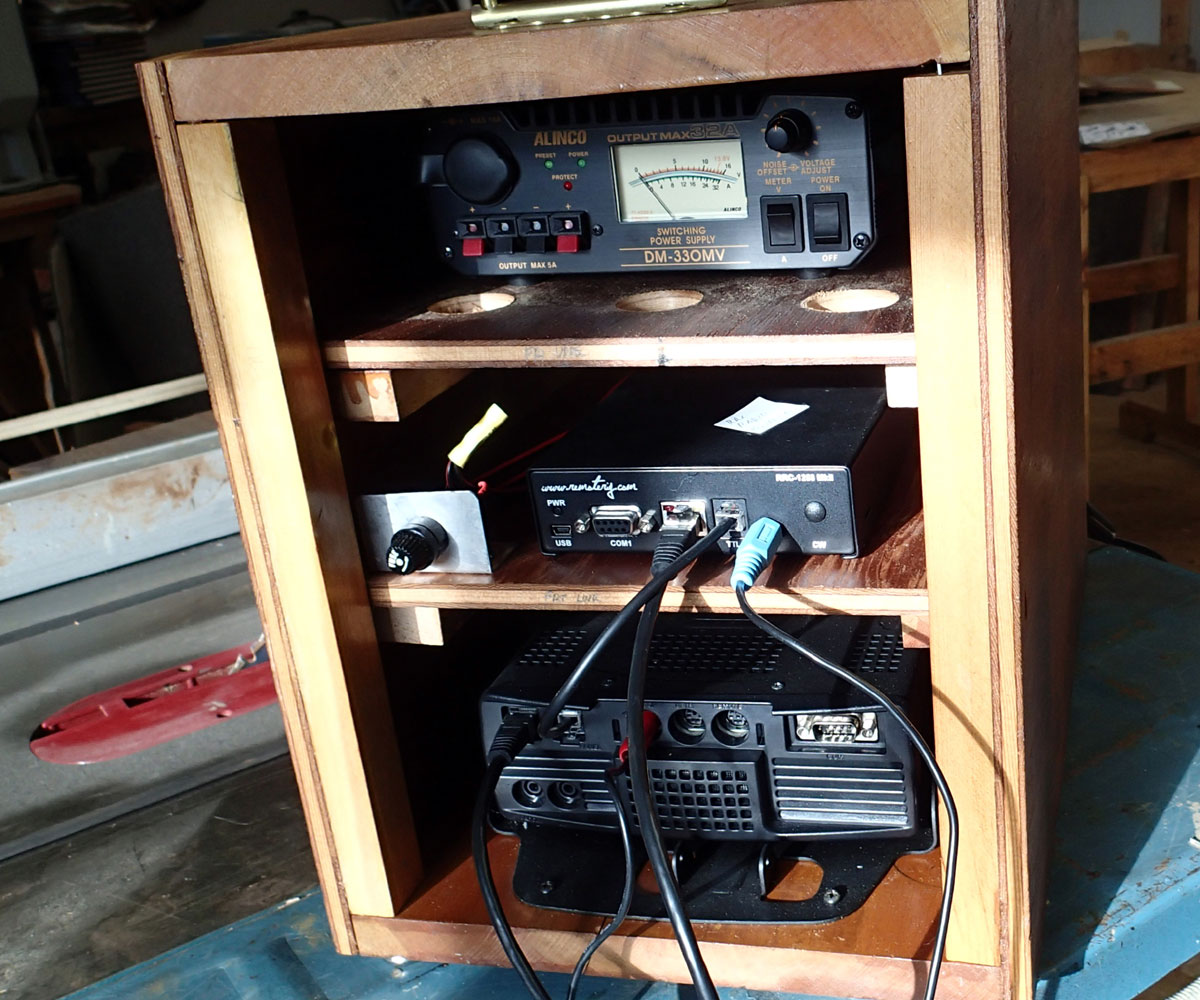
The old box was too small.
Here's a second try: A new bigger radio box
Fuse (middle left) supplies the low current accessories.
Kenwood 480 R/T secured in a mobile bracket.
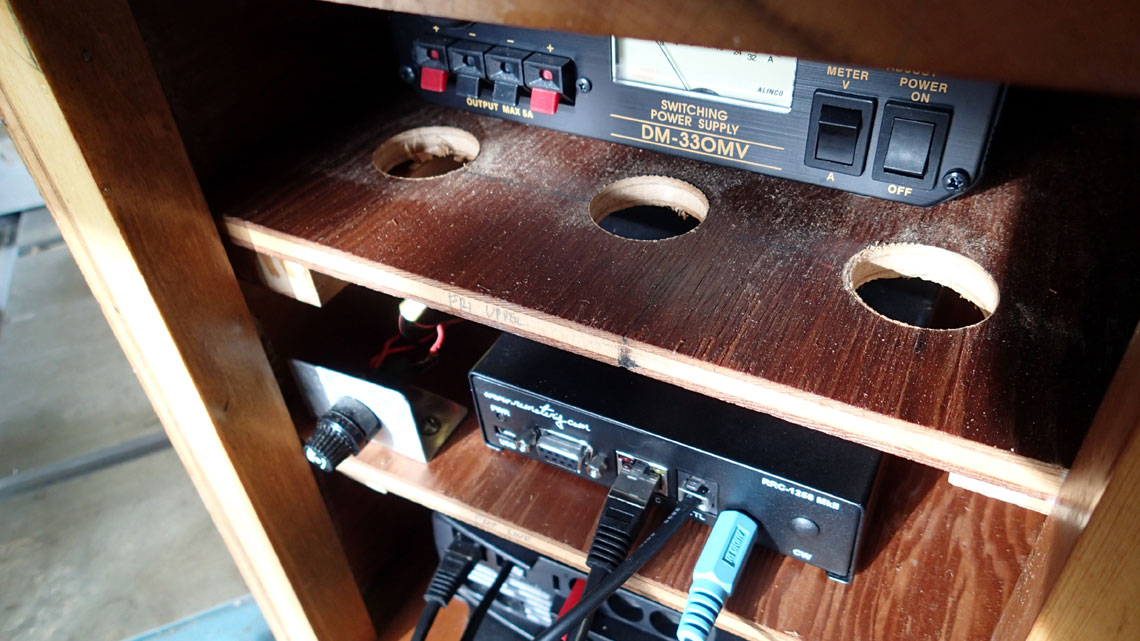
Holes in shelves allow fan to pull air up from the
bottom and through each shelf
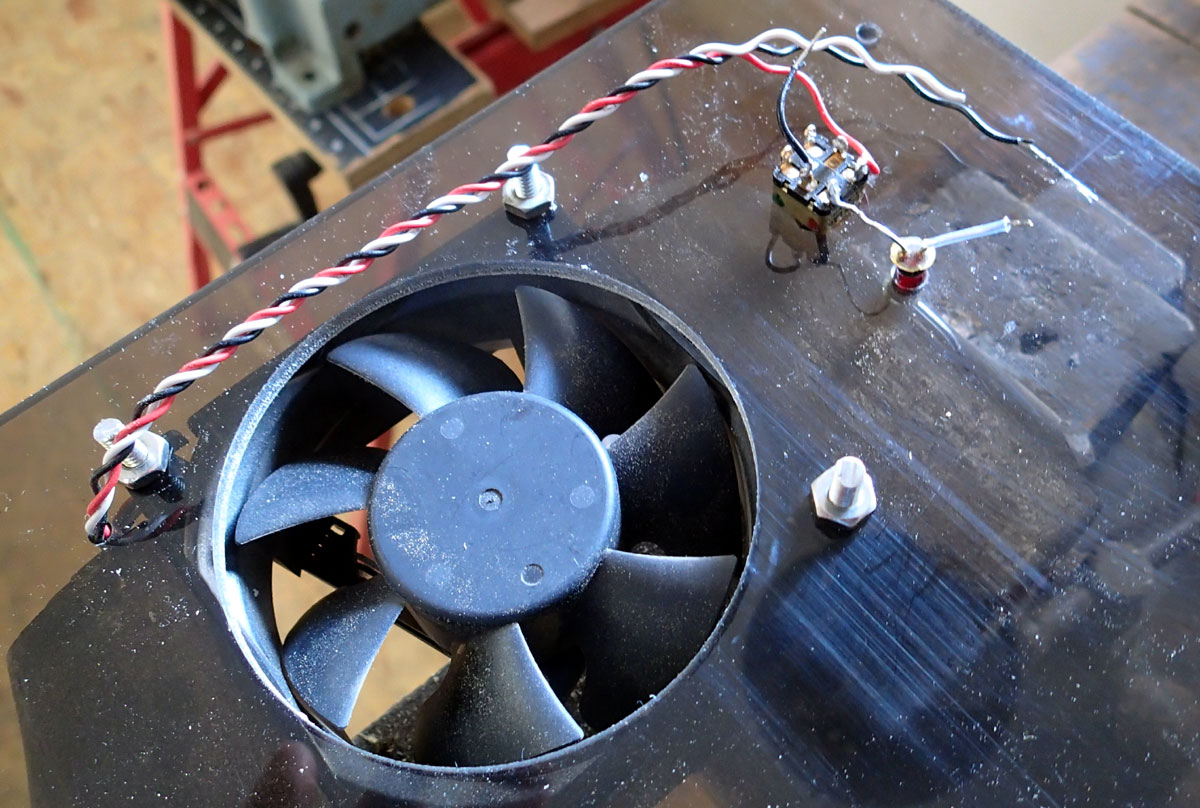
We mount a 12V muffin fan on one of the smoked
Plexiglas ends.
It is set to pull air out of the box. Now we need an easy way to
automatically turn on the fan when the radio is on.
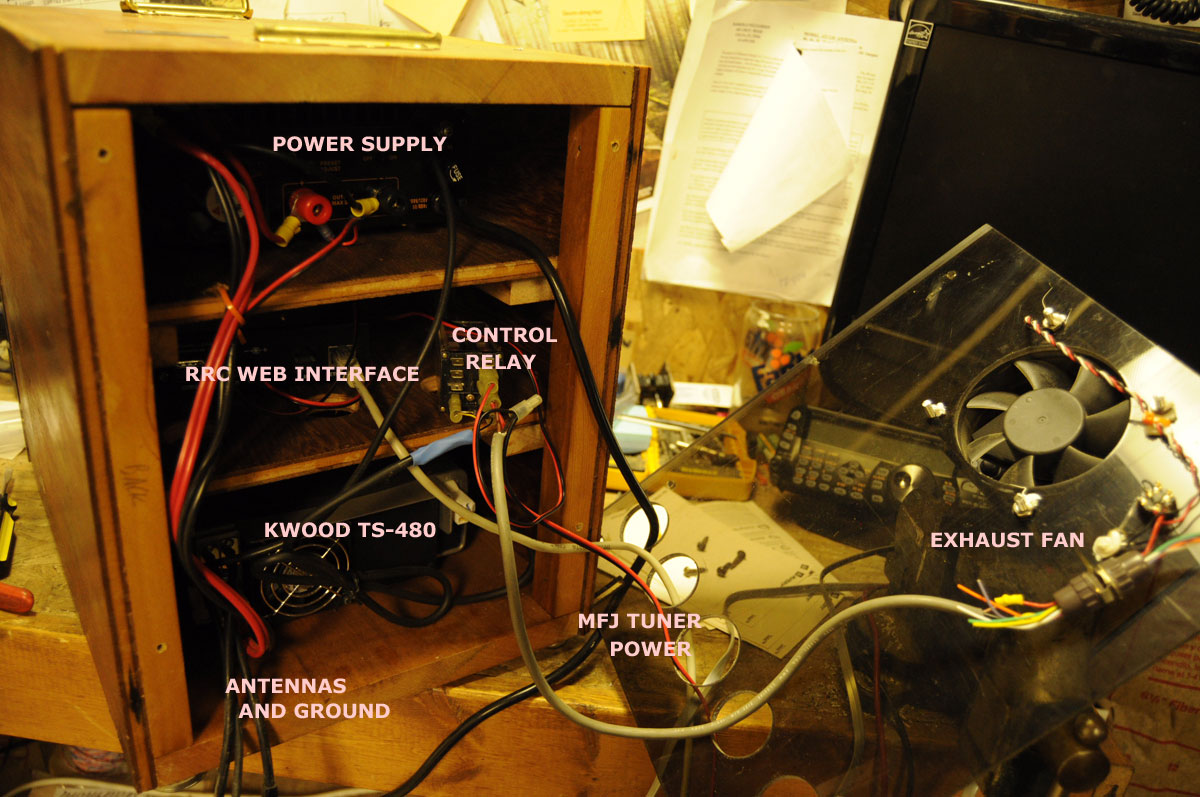
We thought it would be clever to use the Kenwood
external antenna coupler
output plug to power the fan through a small control relay. We
figured that the fan would turn on only when the radio was on.
It worked for about
three months and mysteriously failed. We then rewired the fan to switch
manually by the remote control operator via the
webrelay.
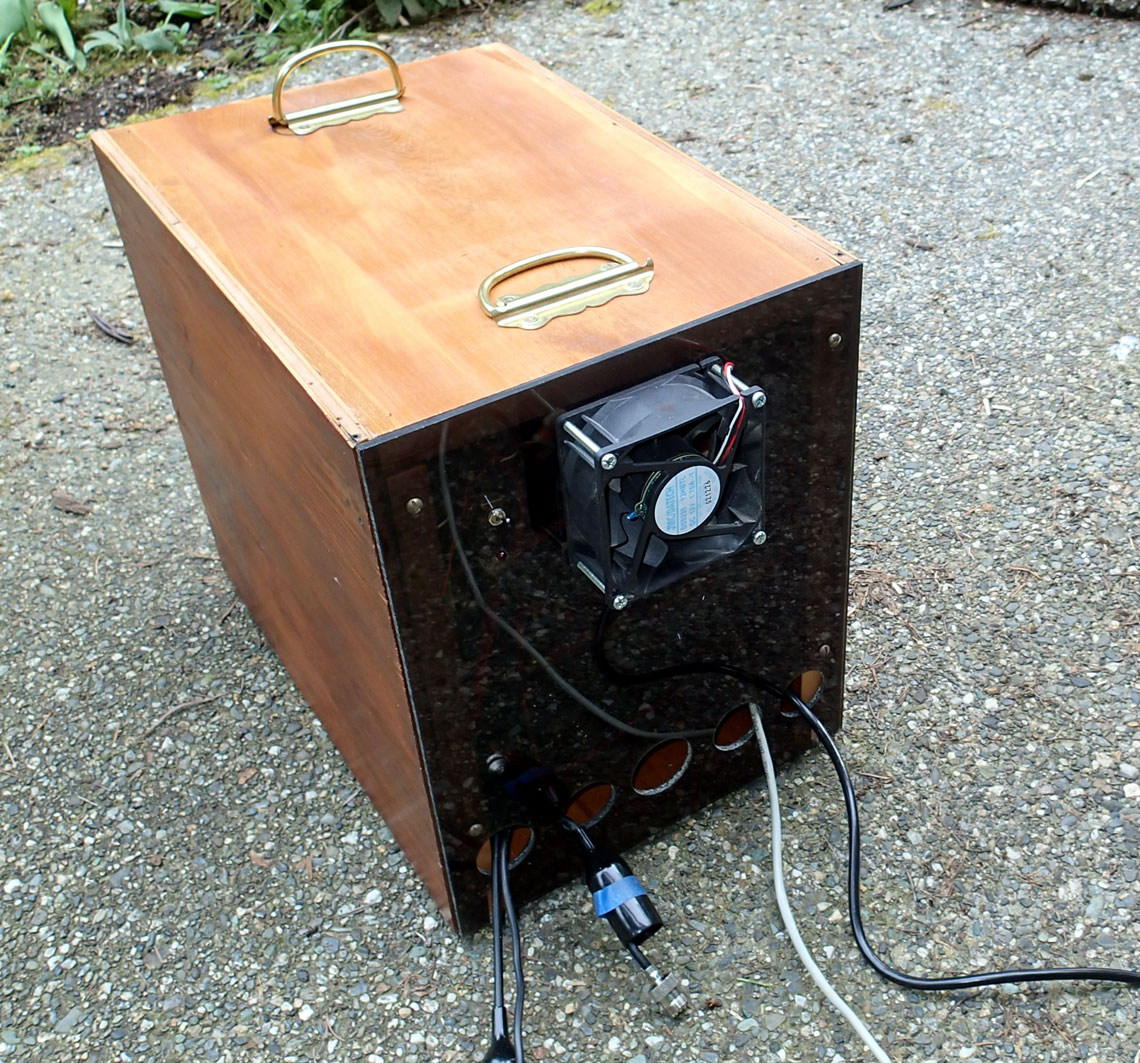
Completed radio box rear view
Antenna connectors, ground, power and network out the back.
Three 1" holes at bottom in front and rear provide adequate airflow.
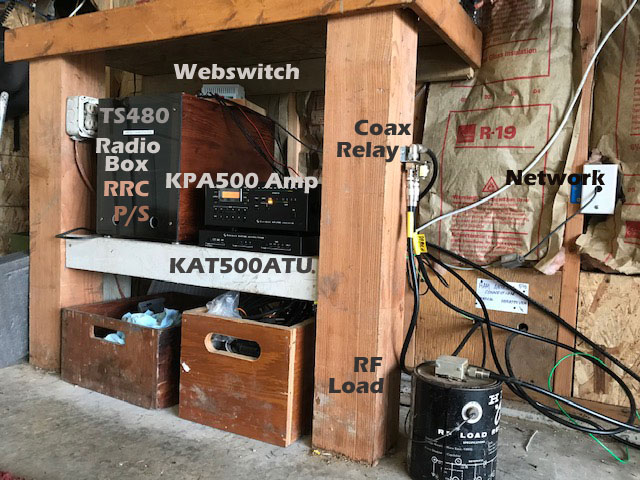
Here's the station under the workbench in the garage
Note the Electraft matching FET amplifier and matching Auto tuner
...another view
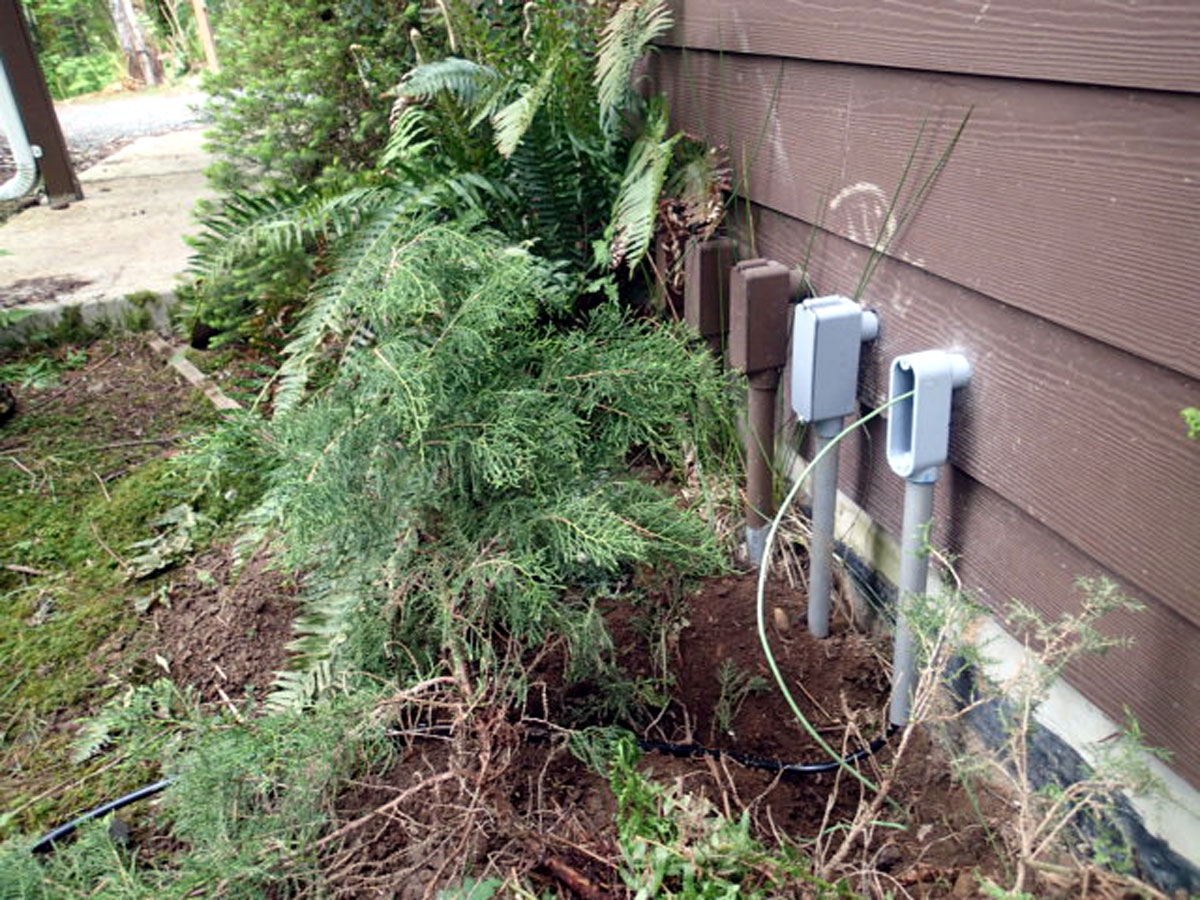
We install permanent underground antenna feeds
through the garage wall. ...more garage
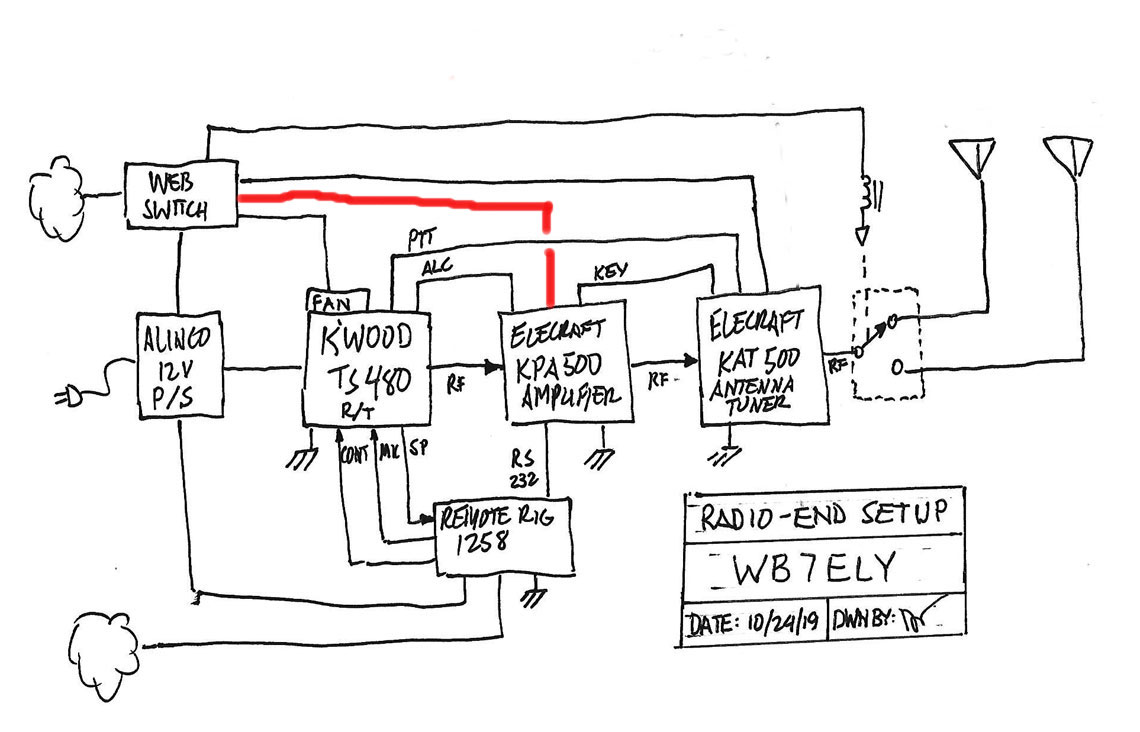
Sketch of the radio-end
Red line is a relay dry contact to switch the amplifier on using the
accessory plug. View the KPA aux plug
pinout sheet
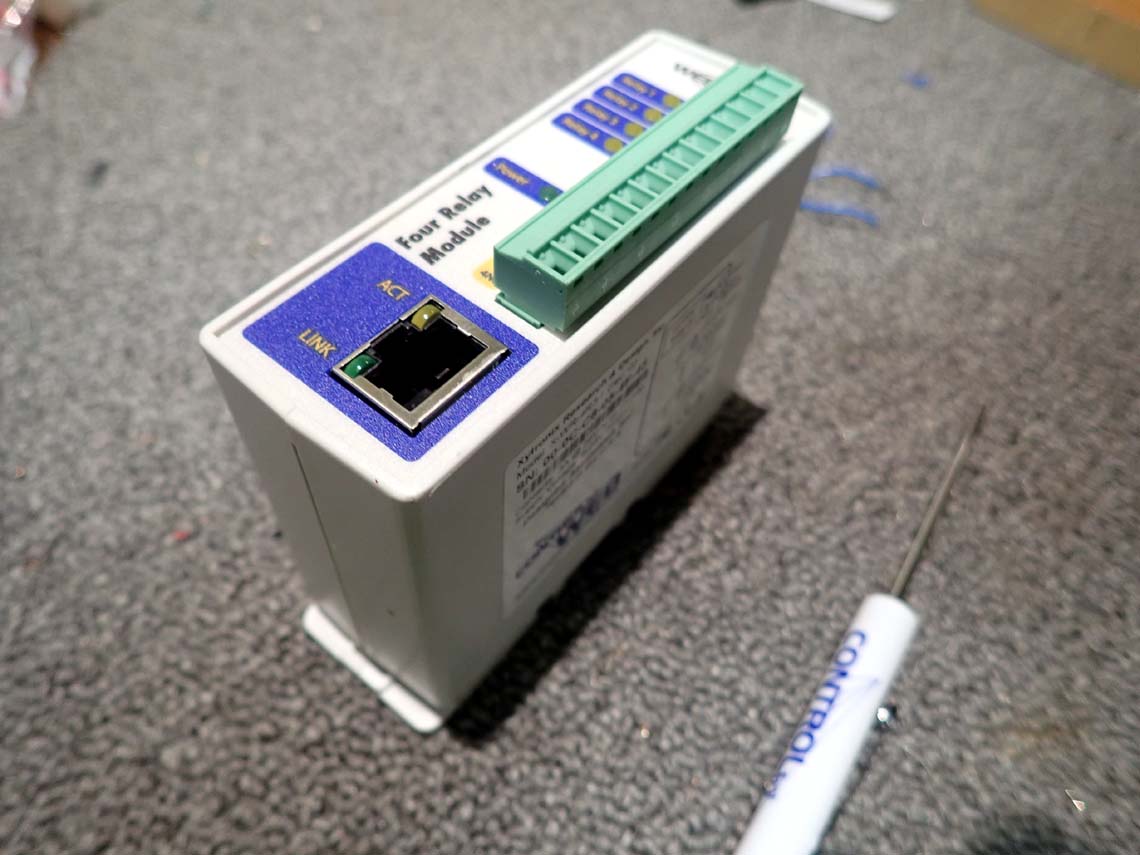
Web relay gives the remote operator four relays for
station control. ...more on the
web relay
1- radio box fan power, 2- KPA amplifier power control, 3- Automatic
antenna tuner power, 4- Antenna select relay
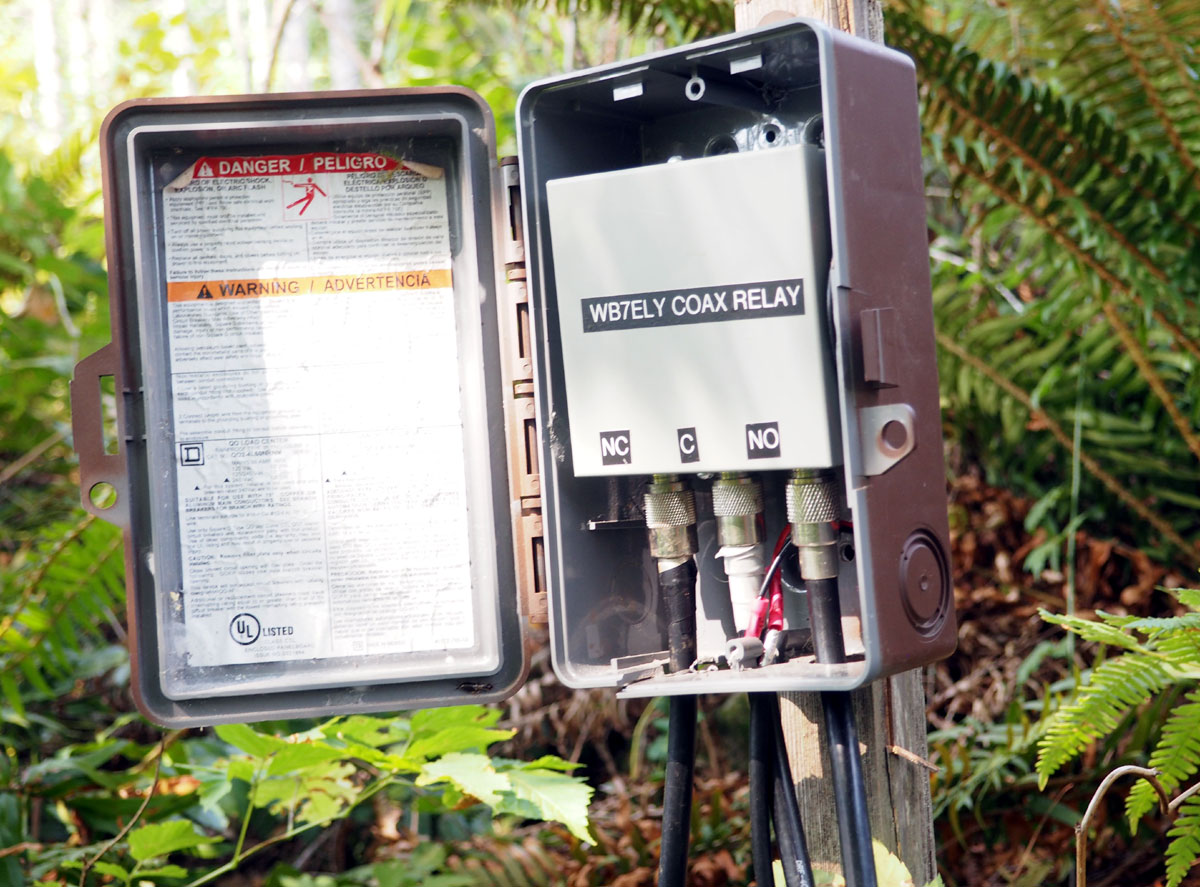
Outdoor remote antenna select relay
Currently G5RV or BK6ZBW, both window line-fed 100' dipoles.